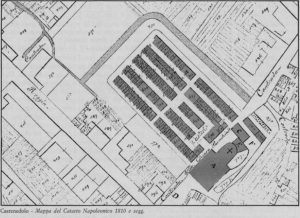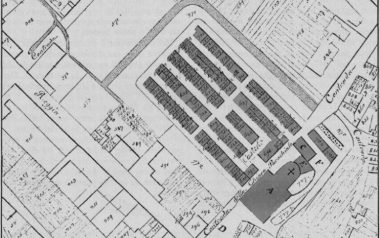Castle of Castenedolo
The Castle of Castenedolo, built by the population towards the end of 1100, was then rebuilt in the middle of the fifteenth century to a small extent, leaving the church outside.
Castle of Castenedolo: Lechi writes: Already being part of the “territorium civitatis” it can be inferred that the wood of the mountain of Castenedolo was defended with some work in the highest part when the Bresciani wanted to defend their possessions on the end of the century . XII. “Castenedolum datum est ad habitandum” say the annals of time. Thus the castelvecchio was created which, according to the Geroldi, should have been built in an area to the north east of the town, therefore far from the main road whose route always passed where the national road passes through Mantua today. This fact leaves us a little ‘doubtful about that conjecture more so that the same Geroldi writes that when the old castle, too small and falling, had to be abandoned, in 1447, arranged municipal finances, the Vicinia dei capifamiglia charged with its members of search and buy the land to build ” unum reductum sive Castellum et ad fortificandum castellum veterem”. From this word it seems, therefore, that the old man had to be strengthened and the new “reduced” or recept built. The new castle, very well delineated on the plan of the early nineteenth century, was erected between 1450 and 1453 immediately after the ducal issued on 8 February 1450, with which the Rectors were authorized to build it “ut a cavalcatis gentium armigerum pro transitu aut aliter deponere possint et conservare res et bona sua”. It consisted of a perfect rectangle; parallel to the course of the road “regia” from which it was 30 meters long, cossed by pits, naturally dry, and from embankments or terracotta in the measures of m. 120×150; within it were built the houses that were to serve as shelter to people and things in case of emergency; which houses were aligned on five regular rows, divided by four internal roads, about 4 meters wide. The whole formed a rectangle of m. 70×120 and around it turned a wall with a single opening towards the church with a tower and drawbridge. Very easily the old castle, which included the parish as well, must have had its eastern perimeter high on the slope that dominates the district of garvolane (again according to the Napoleonic map). In the century XV because it was no longer a question of constructing a real “castrum” but a ” reductum”,the church was kept close, perhaps redone and enlarged, but outside the walls. Inside the castle there were houses of the size of mq. About 50, close together on a surface of less than one hectare. Today the layout of small houses, all on one floor, is still well preserved.
The short signoroia of the carmagnola vanished like a meteor after only five years, after its tragic end the assets were auctioned to citizens of Castenedolo; remained to the Municipality the castle, the “rasega”, the mill, etc. After this fleeting adventure the castle was a witness throughout the century of the passage of truppee also served as an excellent appopgrade for the block of Brescia after the famous siege of 1438. Even in the following century, he stopped for a short rest, after the stormy ride across the Po Valley, Gastone di Foix who was about to plunge to punish Brescia, dismayed. This was in February 1512; but in June the fate of the French had changed after the disastrous, for them, the battle of Ravenna in which many of their leaders died, beginning with Foix, “poenam luentes pro crudelitate in brixianum popolum per eos nequiter commissa”; because the Venetians regained courage and from here they appeared to free Brescia on June 5th. It was a short breath because already in October between Ghedi and Castenedolo stretched his exile the treacherous ally, the Spaniard Cardona. One can imagine what that poor little castle became during the alternating events around Brescia with the Spanish-German army that cut the town until 1517. The last to go to the castle were the lanzichenecchi of Carlo V in 1521, leaving a sad memory. Then also for this castle was the decadence and the slow end. But still in the nineteenth century there were traces of it and the perimeter was clear.
Historical sources: Fausto Lechi “Le dimore bresciane”


